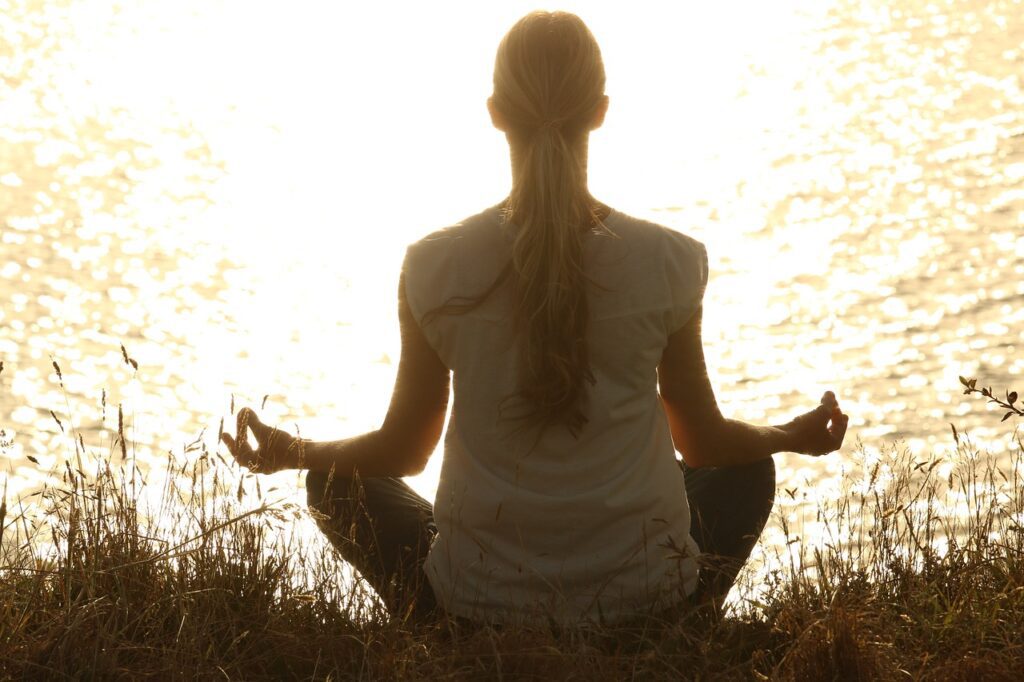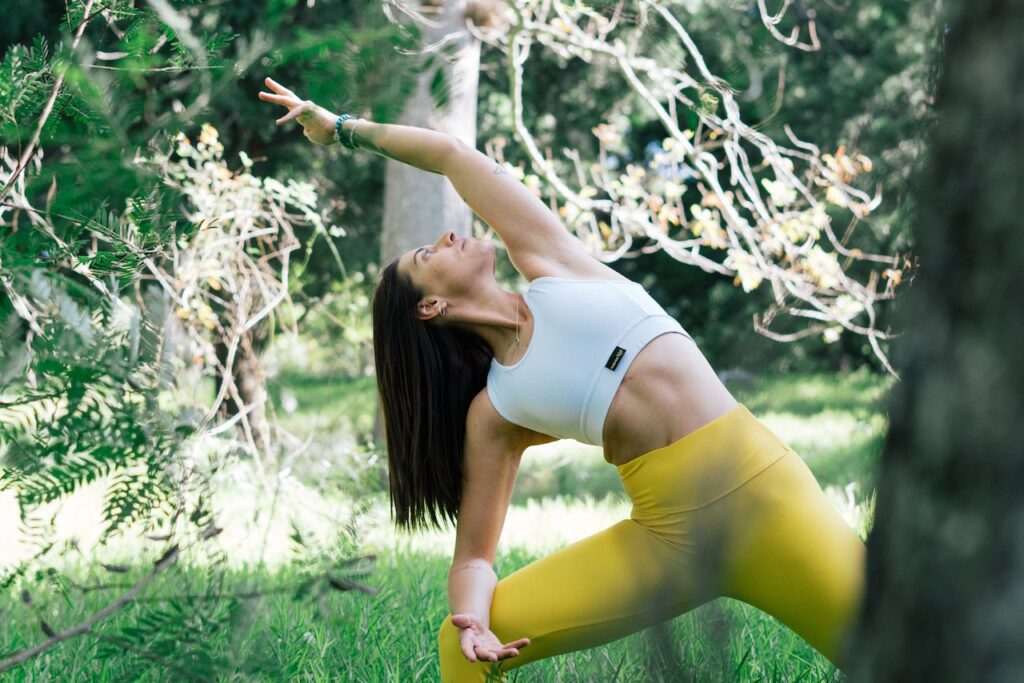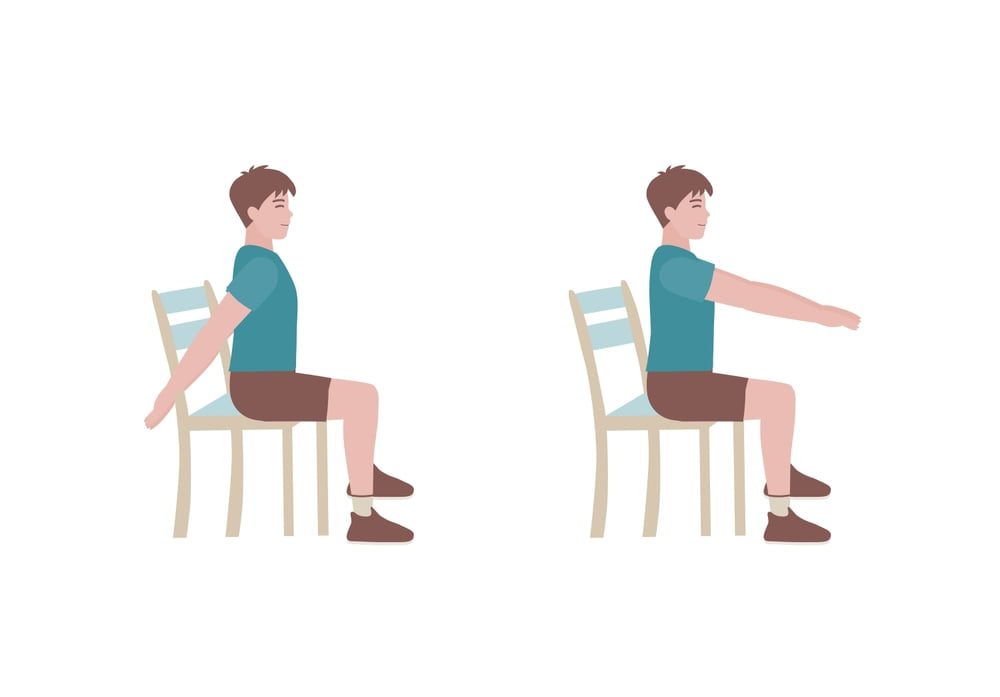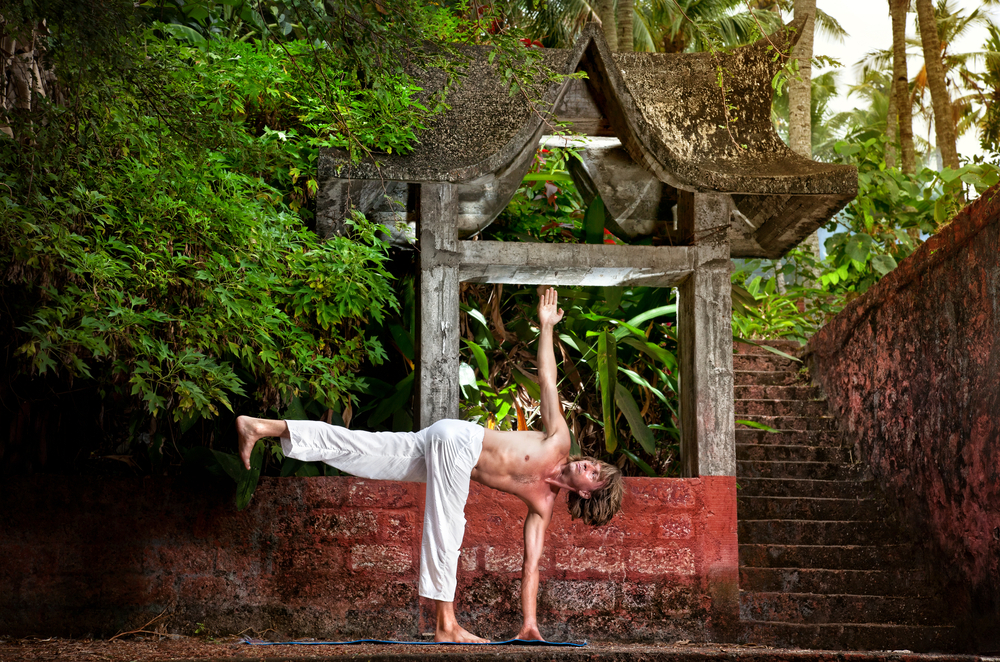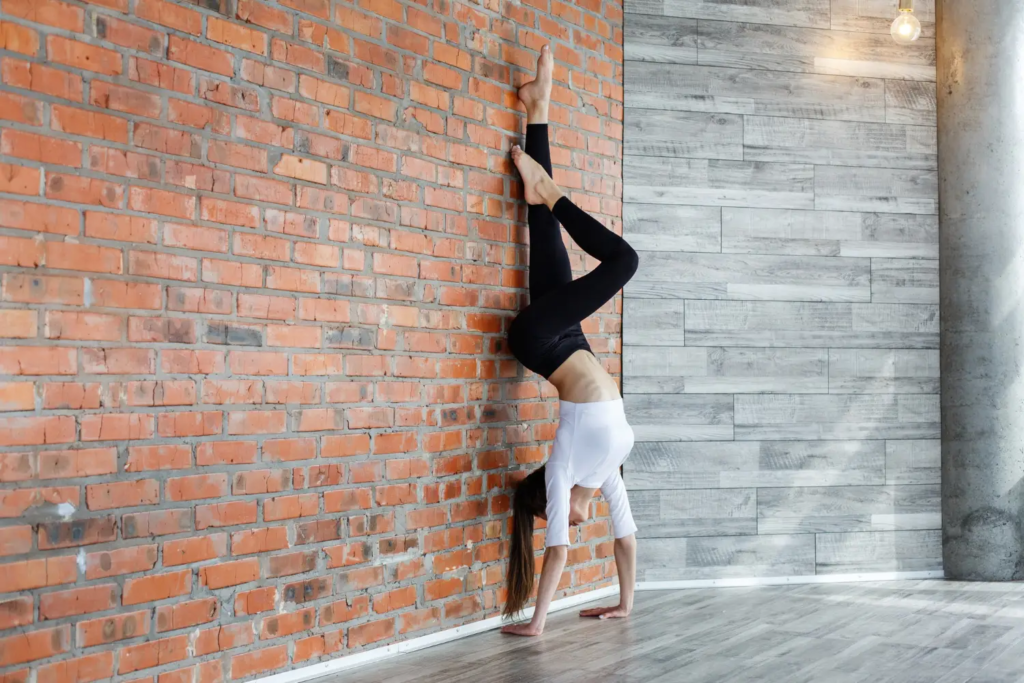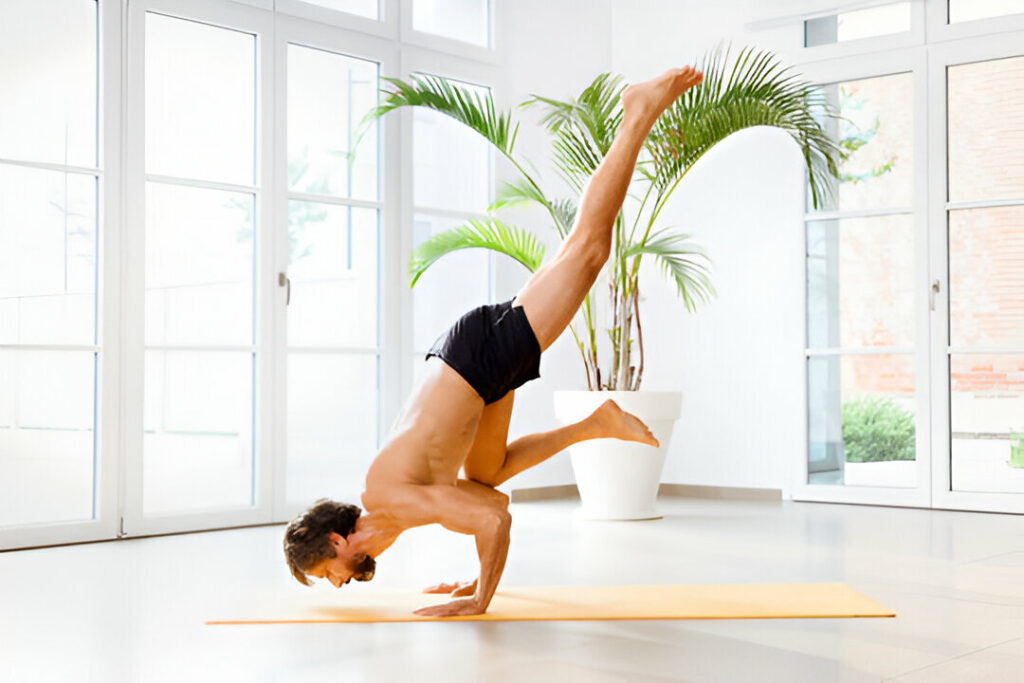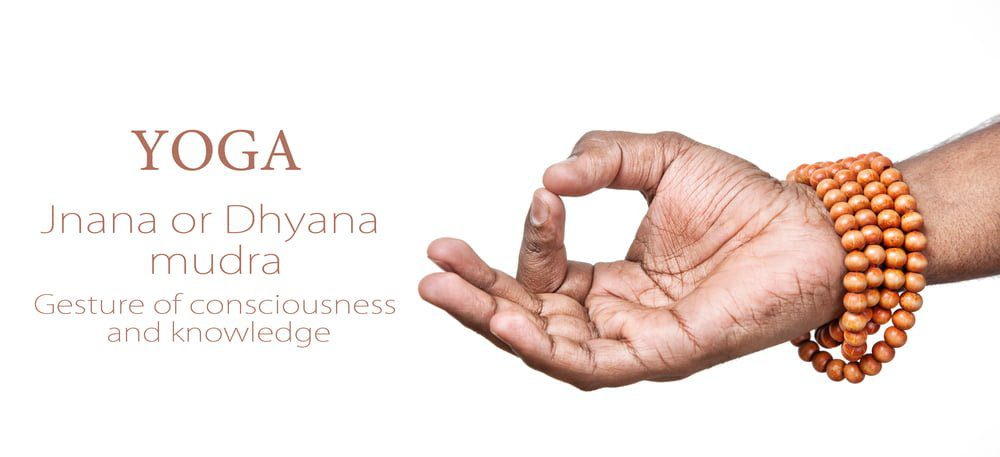Tree pose is a yoga pose in a standing position called Vrikshasana in Sanscrit. Tree pose mimics the strong, beautiful posture of a tree. It involves standing on one leg, with the other leg bent and the foot on the inner thigh or calf of the standing leg. The traditional tree pose has many benefits, and there are also variations of tree pose that have even more incredible benefits for the mind, body, and spirit.
These variations help to challenge our balance and stability and all the while strengthen our strength, flexibility, and concentration. I want to focus on some of the tree pose variations and some of their amazing benefits when done as part of a regular practice. Whether you are a yogi or a beginner, these variations will help bring your practice to the next level and give you the chance to enjoy the benefits of this beautiful and powerful pose.
How to do Tree Pose?
Below are the guidelines to practice Tree pose safely:
- To begin, stand up tall with your feet hips-width apart, with the arms relaxed at your side.
- Lift and shift your weight over to your left foot and root your left foot into the ground.
- Slowly lift your right foot from the ground and hinge your right knee, putting the sole of your foot on your left inner thigh or calf. Your foot should not make contact with your knee joint!
- After you feel balanced, bring your hands to your chest in a prayer position or reach your arms above head with your palms facing each other.
- Find a drishti, or gaze point, to help with the balance.
- Activate your core, elongate your spine, and keep your shoulders relaxed away from your ears.
- Stay in the position for 30 seconds to 1 minute, breathing deeply, and focusing your eyes on your drishti point.
- To release the pose, slowly bring your right foot back to the ground and stand.
Benefits of Practicing Tree Pose.
1. Improved Balance.
Tree pose strengthens the muscles in your legs, feet, and ankles, and allows you to build improved balance. You can prevent falls or injuries in your daily life, and it also provides an excellent opportunity to practice mindfulness and breathing strategies.
2. Increased Focus and Concentration.
Balancing in tree pose requires concentration and mental focus. This moment of mental stillness maintains your focus and digging your concentration through physical effort is a solid use of the pose, particularly if your head is a jumble of thoughts and hard to settle.
3. Enhanced Posture.
Tree pose engages the muscles of the back and abdominals while aligning the spine. Holding tree pose on a regular basis improves posture along with reducing back pain and the spinal stresses of an upright posture.
4. Strengthened Legs and Feet.
Tree pose engages balancing on one leg a number of muscles in your legs and feet – calves, quadriceps, gluts at least. Having stronger feet and legs supports stability when you are moving.
5. Increased Flexibility.
Tree pose opens up the hips, groin and inner legs and adds flexibility. Tree pose also opens and unfurls the chest and shoulders counteracting negative downward pull of sedentary lifestyles and bad posture.
6. Calming and Grounding.
By engaging in Tree pose you will feel a sense of calmness and inner peace. It can provide some relief for anxiety, stress and nervousness by feeling a sense of being grounded – centered and stable.
| 💡 Tips Verywel Fit.com The Tree pose can be modified as you desire, to make it more manageable for your level of comfort. If balancing on one leg is too difficult, start with the sole of your foot against the inner ankle or shin of the standing leg. As you get more comfortable with the pose, eventually putting the foot on the inner thigh. In addition to the physical and mental advantages of committing to Tree pose as part of a regular yoga or fitness routine, it is wonderful to be a “tree” and feel the steadiness, strength and calmness that it gives! |
Tree Pose Variations.
The traditional Tree Pose is certainly beneficial on its own, but many variations can be added to one’s practice to enhance its benefits.
1. High Tree Pose.
This variation varies from simply pulling the foot higher up the standing leg by placing the foot on the inner thigh rather than the calf. By elevating the foot placement, the person doing the pose challenges their balance while adding to the strength of the muscles in the standing leg. High Tree Pose also helps gain hip flexibility and stability.
2. Half Lotus Tree Pose.
In this variation, the practitioner takes the ben t leg’s foot to rest on the opposite leg’s thigh, just above the knee, while maintaining the transition into the balanced Tree Pose’s original line. This variation calls for increased series of pull, greater strength of focus and stability while it enhances hip mobility offers a stretch to the outer hip and thigh.
3. Twisted Tree Pose.
Twisting variations to Tree Pose can be introduced when the practitioner places one hand onto the opposite knee and begins to rotate the torso gently in the opposite direction. This twisting variation can enhance spinal mobility, create digestion, tone the abdominal muscles, and improve body awareness and balance.
4. Extended Tree Pose.
In this variation, the practitioner raises their arms overhead and reaches them up towards the sky while maintaining the traditional Tree Pose balance. This modification deepens the stretch along the side body and shoulders, improves over-a-all alignment and posture, whilst also increasing the practitioner’s sense of openness and expansion in all directions.
Benefits of Tree Pose Variations.
1. Balance and Stability: Practicing the different variations of Tree Pose works on your balance and stability and enhances habits of awareness in your proprioception. Tree Pose variants target body control and coordination, while still working stabilizers in muscles throughout your feet, ankles, and legs.
2. Core Strength: Utilizing Tree Pose variants you practice activation of your core muscles that create stability in your abdominals and lower back to keep you balanced and aligned. Even if you use Tree Pose variants merely to stabilize form, there is an opportunity to strengthen and tone the core and center of the body for improved stability and better posture.
3. Flexibility and Range of Motion: Many Tree Pose variants focus on different muscles groups in the body, using hip flexors, thighs, and shoulders to target different ranges of motion that are made possible through practice of configuration within the pose. Greater range of motion and greater flexibility are a recipe for prevention of injury and improvement of athletic performance when it comes to the Tree Pose and other variants.
4. Mental Focus and Clarity: Practicing Tree Pose variants requires concentration and mindfulness which can help calm ones’ mind while improving focus and mental clarity. The balancing elements of Tree Pose variants can create more grounded sensations for practitioners, helping to reduce and/or alleviate stress and find mental clarity.
| 💡 Tips Verywel Fit.com The introduction of the Tree Pose variations into the normal yoga practice does not only make the practice more versatile, and challenging, but it enhances the effects of the conventional Tree Pose. These changes have physical, mental and emotional benefits and they are an added benefit to every yoga practice. |
Who Can Do Tree Pose?
This pose in yoga can be performed by anyone irrespective of the age or fitness. It is a standing posture which needs stability and balance, hence apt to be practiced by a novice as well as an expert. The posture is standing tall posing in one foot on the ground and the other one against the inner thigh or calf.
It is possible to pull the arms to the sky, which looks like the limbs of a tree. Tree Pose not only enhances balance and body coordination system but also exercises the legs, core, and the ankles. It is a multi versatile pose that can be adapted to any person that has ability hence all can practice it.
Who Should Avoid Tree Pose?
Although the Tree Pose is a safe yoga pose that can be performed by most people, there are some sections of people who would wish to avoid practicing this yoga position. Individuals having chronic/acute injuries of knee or ankle should observe this pose carefully and because of the balance demands, Tree Pose might place an extra load on these joints. Moreover, people having intense feeling of dizziness or vertigo could not feel stable in this pose and should think of the alternatives.
On the one hand, pregnant women might as well consider not using Tree Pose, at least that in late stages of pregnancy, during which they might lose the sense of their center of gravity to shifting the weight to one leg. When trying a new pose, it is always advisable to consult a healthcare professional or a trained yoga instructor particularly when you happen to have some preexisting medical conditions or concerns.
Bottom Line.
The variants of tree pose bring numerous advantages of the mind and body. Through the stress on balance and stability, they assist in fixation, attention, and mental health in general. Moreover, these variations engage various muscle groups, which result in increased strength, flexibility as well as coordination.
Regardless of whether you are a newcomer in yoga or an already experienced practitioner, such forms of tree pose as described above may incorporate being at ground, peaceful, and aware of oneself. Therefore, the next time you place yourself on the mat, do not be afraid to play around each of the tree pose variations and see how much of a difference it makes on your yoga experience.
How we reviewed this article:
Our team of experts is always monitoring the health and wellness field, ensuring that our articles are updated promptly as new information emerges. See Our Editorial Process
Jun 22, 2025
Written By: Pratibha Agarwal
Reviewed By: Anirudh Gupta
Written By: Pratibha Agarwal
Reviewed By: Anirudh Gupta

 Workout
Workout
 Meditation
Meditation





 Contact Us
Contact Us




